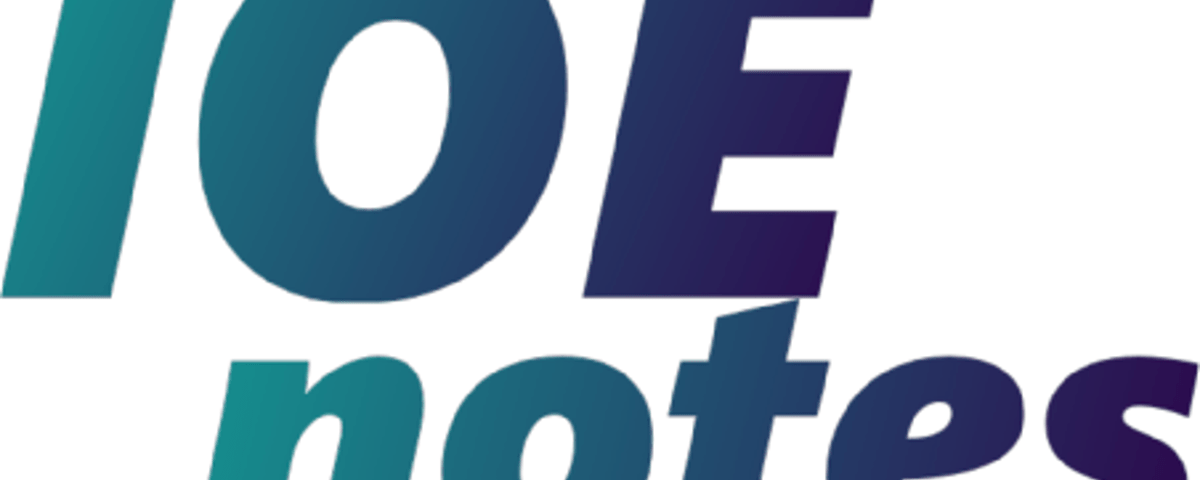COMMUNICATION ENGLISH
|
Lecture |
: |
3 |
Year |
: III |
|
Tutorial |
: |
1 |
Part |
: II |
|
Practical |
: 2 |
|||
Course Objectives
•To make the students capable of producing professional writings such as research articles, technical proposals, reports and project work.
•To familiarize the students with the native speakers’ pronunciation with the use of audio‐visual aids.
|
Unit I: Reading |
(15 hours) |
|
1. Intensive Reading |
8 hours |
1.1.Comprehension
1.2.Note‐taking
1.3.Summary writing
1.4.Contextual questions based on facts and imagination
1.5.Interpreting text
|
2. Extensive Reading |
5 hours |
2.1.Title/Topic Speculation
2.2.Finding theme
2.3.Sketching character
|
3. Contextual Grammar |
2 hours |
3.1.Sequence of tense
3.2.Voice
3.3.Subject‐Verb agreement
3.4.Conditional Sentences
3.5.Preposition
|
Unit II: Writing |
(30 hours) |
|
|
1. |
Introduction to technical writing process |
2 hours |
|
1.1. Composing and editing strategies |
||
|
1.2. MLA and APA comparison |
||
|
2. |
Writing notices with agenda and minutes |
2 hours |
|
2.1. Introduction |
||
2.2.Purpose
2.3.Process
|
3. Writing Proposal |
6 hours |
3.1.Introduction
3.2.Parts of the proposal
3.2.1.Title page
3.2.2.Abstract/Summary
3.2.3.Statement of Problem
3.2.4.Rationale
3.2.5.Objectives
3.2.6.Procedure/Methodology
3.2.7.Cost estimate or Budget
3.2.8.Time management/Schedule
3.2.9.Summary
3.2.10.Conclusion
3.2.11.Evaluation or follow‐up
3.2.12.Works cited
4.Reports
|
4.1. Informal Reports |
6 hours |
4.1.1.Memo Report
4.1.1.1.Introduction
4.1.1.2.Parts
4.1.2.Letter Report
4.1.2.1.Introduction
4.1.2.2.Parts
|
4.2. Project/Field Report |
3 hours |
4.2.1.Introduction
4.2.2.Parts
|
4.3. Formal report |
9 hours |
4.3.1.Introduction
4.3.2.Types of Formal Reports
4.3.2.1.Progress Report
4.3.2.2.Feasibility Report
4.3.2.3.Empirical/ Research Report
4.3.2.4.Technical Report
4.3.3. Parts and Components of Formal Report
4.3.3.1. Preliminary section
|
4.3.3.1.1. |
Cover page |
|
4.3.3.1.2. |
Letter of transmittal/Preface |
|
4.3.3.1.3. |
Title page |
|
4.3.3.1.4. |
Acknowledgements |
|
4.3.3.1.5. |
Table of Contents |
|
4.3.3.1.6. |
List of figures and tables |
|
4.3.3.1.7. |
Abstract/Executive summary |
|
4.3.3.2. Main Section |
|
|
4.3.3.2.1. |
Introduction |
|
4.3.3.2.2. |
Discussion/Body |
|
4.3.3.2.3. |
Summary/Conclusion |
|
4.3.3.2.4. |
Recommendations |
|
4.3.3.3. 4.3.3.3 Documentation |
|
|
4.3.3.3.1. |
Notes (Contextual/foot notes) |
|
4.3.3.3.2. |
Bibliography |
|
4.3.3.3.3. |
Appendix |
|
5. Writing Research Articles |
2 hours |
|
5.1. Introduction |
|
|
5.2. Procedures |
|
References
1.Adhikari, Usha : Yadv, Rajkumar : Shrestha, Rup Narayan ; (2000) Communicative Skills in english,Research Training Unit, IOE, Pulchowk Campus
2.Khanal, Ramnath, (2008) Need‐based Language Teaching (Analysis in Relation to Teaching of English for Profession Oriented Learners) Kathmandu : D, Khanal.
3.Konar, Nira (2010), Communication Skills for Professional PHI Learning Private Limited, New Delhi.
4.Kumar, Ranjit (2006), Research Methodology, Pearson Education.
5.Laxminarayan, K.R (2001), English for Technical Communication. Chennai; Scitech publications (India) Pvt. Ltd.
6.Mishra, Sunita et. al. (2004), Communication Skills for Engineers, Pearson Education First Indian print.
7.Prasad, P. et. al (2007), The functional Aspects of Communication Skills S.K. Kataria & sons.
8.Rutherfoord, Andrea J. Ph.D (2001), Basic Communication Skills for Technology, Pearson Education Asia.
9.Rizvi, M. Ashraf (2008), Effective Technical Communication. Tata Mc Graw Hill.
10.Reinking A James et. al (1999), Strategies for Successful Writing: A rhetoric, research guide, reader and handbook, Prentice Hall Upper Saddle River, New Jersey.
11.Sharma R.C. et al. (2009), Business Correspondence and Report Writing: A
Practical Approach to Business and Technical communication. Tata Mc Graw Hill.
12. Sharma, Sangeeta et. al (2010) Communication skills for Engineers and
|
Scientists, PHI Learning Private Limited, New |
Delhi. |
|||||
|
13. Taylor, Shirley et. al. (2009), Model Business letters, E‐mails & other |
||||||
|
Business documents, Pearson Education. |
||||||
|
Language lab |
30 hours |
|||||
|
Listening |
12 hours |
|||||
|
Activity I |
General |
instruction on effective listening, factors |
2 hours |
|||
|
influencing listening, and note‐taking to ensure |
||||||
|
ttention. |
||||||
|
(Equipment Required: Laptop, multimedia, laser |
||||||
|
pointer, overhead projector, power point, DVD, |
||||||
|
video set, screen) |
||||||
|
Activity II : |
Listening to recorded authentic instruction followed |
2 hours |
||||
|
by exercises. |
||||||
|
(Equipment Required: Cassette player or laptop) |
||||||
|
Activity III |
Listening to recorded authentic description |
4 hours |
||||
|
followed by exercises. |
||||||
|
(Equipment Required: Cassette player or laptop) |
||||||
|
Activity IV |
Listening to recorded authentic conversation |
4 hours |
||||
|
followed by exercises |
||||||
|
(Equipment Required: Cassette player or laptop) |
||||||
|
Speaking |
18 hours |
|||||
|
Activity I |
General instruction on effective speaking ensuring |
2 hours |
||||
|
audience’s attention, comprehension and efficient |
||||||
|
use of Audio‐visual aids. |
||||||
|
(Equipment Required: Laptop, multimedia, laser |
||||||
|
pointer, |
DVD, video, overhead |
projector, power |
||||
|
point, screen) |
||||||
|
Activity II |
Making students express their individual views on |
2 hours |
||||
|
the assigned topics |
||||||


